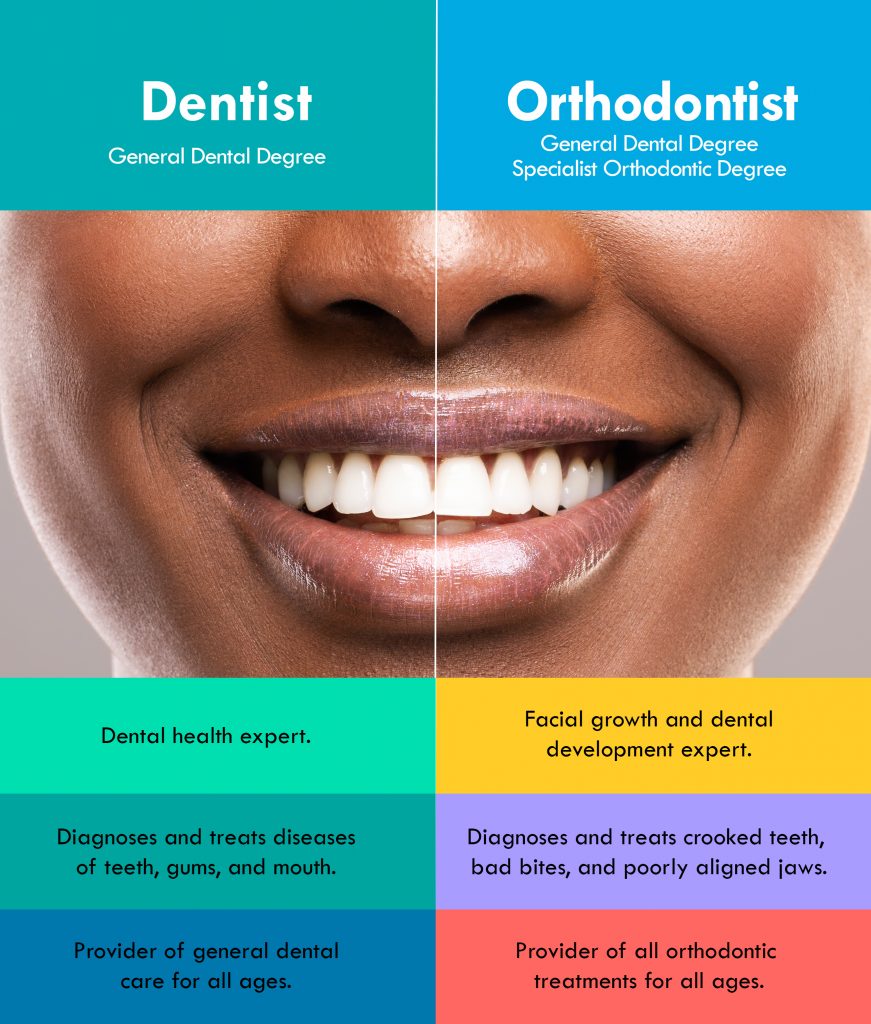The Definitive Guide to Legacy Orthodontics
The Definitive Guide to Legacy Orthodontics
Blog Article
Not known Details About Legacy Orthodontics
Table of ContentsNot known Facts About Legacy OrthodonticsAll about Legacy OrthodonticsAn Unbiased View of Legacy OrthodonticsThe Definitive Guide to Legacy OrthodonticsIndicators on Legacy Orthodontics You Should Know
In addition, we use flexible therapy schedules, adaptable repayment alternatives and a fun, enjoyable experience.An orthodontist is a dental expert trained to identify, protect against, and deal with teeth and jaw irregularities. They correct existing problems and are educated to identify issues that might establish in the future. Orthodontists work with people of any ages, from youngsters to grownups. People usually connect a perfect smile with healthiness.
Malocclusion, or misaligned teeth, can bring about dental issues, including tooth degeneration, gum tissue illness, and difficult or excruciating chewing. Not everyone is born with straight teeth. If you have a bad bite or large areas between your teeth, you might wish to get in touch with a dental expert specializing in orthodontic care.
The Definitive Guide to Legacy Orthodontics
( Image Credit: DigitalVision/Getty Images) Orthodontists use fixed and removable oral tools, like dental braces, retainers, and bands, to alter the position of teeth in your mouth. Orthodontic treatment is for oral abnormalities, consisting of: Jagged teethBite troubles, like an overbite or an underbiteCrowded teeth or teeth that are also much apartJaw misalignmentThe objective of orthodontic treatment is to boost your bite.
A healthy and balanced bite guarantees you can consume, eat, and talk correctly. While you may assume of orthodontists as mostly for kids or young adults that need braces, they can fix oral troubles at any kind of age. Orthodontists participate in university, dental institution, and orthodontic college. After college graduation, they spend 2 or 3 years in an orthodontic residency program.
All orthodontists are dental practitioners, yet not all dental professionals are orthodontists. Orthodontic residency programs provide intensive, focused guideline for dental experts. They concentrate on 2 areas: Just how to effectively and securely relocate teeth How to properly assist advancement in the teeth, jaw, and faceOnce an orthodontist has actually completed training, they have the option to come to be board licensed.
Our Legacy Orthodontics Ideas
Imbalance, or malocclusion, is the most common reason individuals see an orthodontist. It is hereditary and is the outcome of size differences between the upper and lower jaw or between the jaw and teeth. Malocclusion causes tooth overcrowding, a misshapen jaw, or uneven bite patterns. Malocclusion is typically treated with: Your orthodontist affixes steel, ceramic, or plastic square bonds to your teeth.
Some people require a headgear to assist relocate teeth into line with pressure from outside the mouth. A retainer is a personalized device that keeps your teeth in location.
They're usually used on children. They can produce additional room in the mouth without having to pull teeth. If you have a major underbite or overbite, you could need orthognathic surgery (additionally called orthodontic surgical procedure) to extend or reduce your jaw. Orthodontists utilize cables, medical screws, or plates view website to sustain your jaw bone.
You might need to see an orthodontist if you have: Crowding or not adequate space for all of your teethOverbite, when your upper teeth come by your bottom teethUnderbite, when your base teeth are too far forwardSpacing or problems with gapsCrossbite, which is when your top teeth fit behind your base teeth when your mouth is closedOpen bite or a vertical space between your front base and top teethMisplaced midline, when the facility of your bottom and top teeth don't line up Dealing with an oral malocclusion can: Make attacking, chewing, and talking easierImprove the proportion of our face and your total appearanceEase discomfort from temporomandibular joint conditionsSeparate your teeth and make them much easier to clean up, helping avoid dental caries or tooth cavities It's usually a dentist who first notifications misaligned teeth throughout a routine exam.
A Biased View of Legacy Orthodontics

During your first orthodontic appointment, you'll likely have: An oral examPhotos taken of your face and smileDental X-raysPanoramic (360 level) X-rays of your face and headImpressions to produce mold and mildews of your teethThese tests will certainly assist your orthodontist understand how to continue with your treatment. leesburg braces. An orthodontist is a dental professional who's had training to treat your teeth and jaw
An orthodontist is concentrated on your bite, so something like a broken tooth would certainly be dealt with by a dentist. Orthodontists are concentrated on your bite, or the way your teeth fit with each other, and the straightness of your teeth.
Ever before questioned exactly how celebs constantly seem to have flawlessly aligned teeth? Orthodontists are oral specialists who focus on correcting abnormalities in the teeth and jaws.
The Single Strategy To Use For Legacy Orthodontics

While dental braces are the most typically acknowledged orthodontic treatment, orthodontists have a diverse toolkit at their disposal. The details method selected relies on the seriousness of the case, the individual's age, and specific preferences. These tried-and-true dental braces use a system of brackets bound to the teeth and linked by wires.
Clear aligners, like Invisalign, are a popular option for people seeking a more discreet treatment option. These detachable trays are custom-made to progressively move the teeth's setting. Headgear may be used combined with braces or aligners to apply extra targeted pressures, specifically for correcting jaw discrepancies. In cases of narrow jaws, palatal expanders can be used to create room for appropriate tooth placement.
Report this page